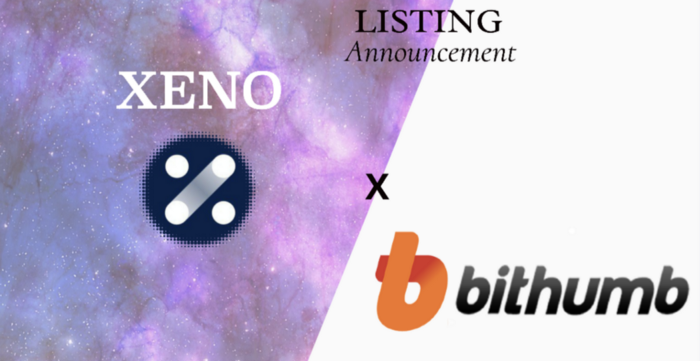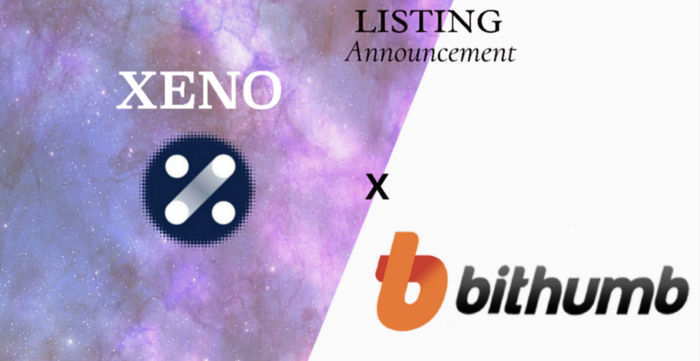Blogs
Zilliqa (ZIL): A New Coin on the Block

Zilliqa (ZIL) was introduced in the cryptocurrency market on 26th January 2018. It is, in fact, the first public blockchain that engages sharding that enables linear scaling along with the physical growth of the blockchain. Scalability issues of Bitcoin and Ethereum have long been a concern. At the moment being unable to meet all the demands, the transaction fees on the Bitcoin blockchain have increased significantly. In case of Ethereum, the smart contracts can become gas-intensive when it is limited throughput. Many newer crypto coins and even ERC20 tokens have tried to address this issue. But, till date, no one has been able to come up with the perfect solution. So, what makes Zilliqa different?
Zilliqa Combating Scalability Issues
Zilliqa brings in a new approach to the scalability issue. The sharding solution allows the network to grow in size. So, theoretically speaking the network of Zilliqa can process any number of transactions per second. However, in the real situation, considering the number of nodes present on the network, it can confirm tens or hundreds or thousands of transactions in one second.
It has been observed that with increment in the number of nodes present in the network, the time taken to reach consensus to confirm a transaction increases. Therefore, the network size and consensus speed are inversely proportional to each other. To truly solve scalability issues, the network size and the time taken to reach consensus should be working together. Zilliqa’s solution is different as it re-imagines the blockchain from the beginning. The model includes a hybrid consensus protocol that allows growth of the network’s throughput as nearly 600 new nodes join the network. The work gets divided into nearly 600 new nodes join the Zilliqa network. The problem is that there will be issues with broadcast when the number of nodes goes beyond one million. But, it is an upper limit and at this moment the network is far away from reaching the mark. Till now, the Zilliqa network has managed to confirm 2400 transactions per second while the sharding solution was being tested on the private blockchain.
The concept of sharding
Shard is the group formed when the Zilliqa protocol segregates the mining nodes present on the network into 600 each. Suppose, if there are 3600 nodes present then they will be divided into 6 shards. As the number of nodes increases the number of shards will also increase.
By dividing the work, the Zilliqa network ensures faster transactions. The shards will be taking care of a fraction of the network’s transactions. As the number of nodes is segregated into groups the amount of work done by a shard gets divided by the total number of groups present on the network at the moment. Thus the consensus load gets divided among the shards and the network is able to meet the computing demands. The assigned transactions are processed by the shard into a microblock. The processing period is called the “DS epoch” and by the end of it, all the microblocks combine to form a full block. It is then incorporated into the blockchain.
Zilliqa Testnet v1.0 Release
Codenamed Red Prawn, the announcement of the release of Zilliqa Testnet v1.0 was done by Yaoqi Jia, Zilliqa’s Head of Technology on 31st March 2018. The sharding technology has been successfully utilized by MasterCard, Visa, and other international payment mediums. The motive of Zilliqa behind implementing this technology is to increase throughput such that there is a linear increase in the size of the network along with an increase in the demand for the number of transactions. Testnet v1.0 is speculated to have the capability of carrying out approximately 1000 transactions per second. From the official blog of Zilliqa (ZIL), “Please note that Red Prawn is the first version of our testnet and we will be continuously updating the testnet on a weekly basis. In our internal testing, we ran experiments on about 2,000 to 3,000 nodes achieving 2,000–3,000 transactions per second. As we have implemented several new features in the past few weeks, we do realize that the stability of our testnet needs improvement. We are first releasing a testnet with 1,000 nodes (4 shards) running on AWS.”
Zilliqa and Noorcoin Partnership
Zilliqa partnered up with the world’s first shariah token Noorcoin, early this April. Zilliqa will now be able to test its blockchain protocol for on-chain high-throughput transactions for the Noorcoin system. Hear it from Noorcoin’s founder and CEO, Sofia Koswara the reason to choose Zilliqa, “We’ve decided to build on Zilliqa’s platform since it opens up new options that weren’t possible earlier. We aspire to achieve outstanding quality and to be a pioneer in setting the best practices in the world for the growing blockchain industry. With Zilliqa we believe that we can achieve that goal.”
Zilliqa (ZIL) Price Analysis
According to the price chart of Ziliqa (ZIL) on coinmarketcap.com, the coin had managed to ‘maintain’ green candles ever since its inception into the cryptocurrency market. At the time of writing, the price is $0.09 USD (7.39%) approximately and the rank shown is 36. The market cap is approximately $699,243,414 USD and the volume (24h) is nearly $37,958,200 USD. (As of 27th April 2018). The unique approach of Zilliqa (ZIL) to scalability has the capability of bringing in more partnerships and this, in turn, will hopefully see more investors. So, this is probably the ‘perfect’ time to buy the crypto coin and hold on to it.
We will be updating our subscribers as soon as we know more. For the latest on ZIL, sign up for our Telegram!
Disclaimer: This article should not be taken as, and is not intended to provide, investment advice. Global Coin Report and/or its affiliates, employees, writers, and subcontractors are cryptocurrency investors and from time to time may or may not have holdings in some of the coins or tokens they cover. Please conduct your own thorough research before investing in any cryptocurrency and read our full disclaimer.
Image courtesy of Molly Dilworth via Flickr
Altcoins
XNO Token of Xeno NFT Hub listed on Bithumb Korea Exchange


Hong Kong, Hong Kong, 25th January, 2021, // ChainWire //
Xeno Holdings Limited (xno.live ), a blockchain solutions company based in Hong Kong, has announced the listing of its ecosystem utility token XNO on the ‘Bithumb Korea’ cryptocurrency exchange on January 21st 2021.
Xeno NFT Hub (market.xno.live ), developed by Xeno Holdings, enables easy minting of digital items into NFTs while also providing a marketplace where anyone can securely trade NFTs.
The Xeno NFT Hub project team includes former members of the technology project Yosemite X based in San Francisco and professionals such as Gabby Dizon who is a games industry expert and NFT space influencer based in Southeast Asia.
NFT(Non-Fungible Token) technology has recently gained huge focus in the blockchain arena and beyond, making waves in the online gaming sector, the art world, and the digital copyrights industry in recent years. The strongest feature of NFTs is that “NFTs are unique digital assets that cannot be replaced or forged”. Unlike fungible tokens such as Bitcoin or Ether, NFTs are not interchangeable for other tokens of the same type but instead each NFT has a unique value and specific information that cannot be replaced. This fact makes NFTs the perfect solution to record and prove ownership of digital and real-world items like works of art, game items, limited-edition collectibles, and more. One of the ways to have a successful…
Altcoins
Should Crypto Projects Devote Resources to Community Growth and Marketing?

2020 has been an incredible year for crypto as investors have generated windfall profits and crypto projects have seen their businesses gain the spotlight they’ve been looking for. While Bitcoin has received most of the attention after major institutional investors announced they were accumulating the increasingly scarce asset, many altcoins have also seen their fair share of glory. When looking at all the big winners of the past year, the first project that probably comes to mind is Chainlink, having appreciated by more than 550% YTD and now valued at over $4.5 billion. But, the actual biggest winner of the year is HEX with a YTD return of over 5,000%.
I mention both of the above projects as they have each taken slightly different paths to achieve greatness. Chainlink has devoted resources toward building a fundamentally sound business with many strategic partnerships while HEX has spent vast sums of money on marketing and promotion. Both approaches are valid, but one thing is certain, it is absolutely imperative for crypto projects to let the crypto community know what makes them special. Of course, one of the reasons that makes crypto so valuable is the powerful blockchain technology that most projects are utilizing.
Cryptocurrency vs. Blockchain Technology
It’s important to make a distinction between blockchain technology and cryptocurrency. Although they are often used interchangeably, they are different. Blockchain technology and crypto were both created after the 2008 financial crisis, but cryptocurrency…
Altcoins
XENO starts VIP NFT trading service and collaborates with contemporary artist Hiro Yamagata


Hong Kong, Hong Kong, 24th December, 2020, // ChainWire //
The XENO NFT Hub (https://xno.live) will provide a crypto-powered digital items and collectables trading platform allowing users to create, buy, and sell NFTs. Additionally it will support auction based listings, governance and voting mechanisms, trade history tracking, user rating and other advanced features.
As a first step towards its fully comprehensive service, XENO NFT Hub launched a recent VIP service to select users and early adopters in December 2020 with plans for a full Public Beta to open in June 2021.
“NFTs are extremely flexible in their usage, from digital event tickets to artwork, and while NFTs have a very wide spectrum of uses and categories XENO will initially focus its partnership efforts and its own item curation on three primary areas: gaming, sports & entertainment, and collectibles.”, said XENO NFT Hub president Anthony Di Franco.
He also added “This does not mean we will prohibit other types of NFTs from our ecosystem However, it simply means that XENO’s efforts as a company will be targeted into these verticals initially as a cohesive business approach.”
Development and Procurement Lead, Gabby Dizon explained, “Despite our initial focus, we found ourselves with a unique opportunity to host some of the works of Mr. Hiro Yamagata. We are collaborating with Japanese artist Hiro Yamagata to enshrine some of his artwork into NFTs.”
Mr. Yamagata has…
-

 Blogs6 years ago
Blogs6 years agoBitcoin Cash (BCH) and Ripple (XRP) Headed to Expansion with Revolut
-

 Blogs6 years ago
Blogs6 years agoAnother Bank Joins Ripple! The first ever bank in Oman to be a part of RippleNet
-

 Blogs6 years ago
Blogs6 years agoStandard Chartered Plans on Extending the Use of Ripple (XRP) Network
-

 Blogs6 years ago
Blogs6 years agoElectroneum (ETN) New Mining App Set For Mass Adoption
-

 Don't Miss6 years ago
Don't Miss6 years agoRipple’s five new partnerships are mouthwatering
-

 Blogs6 years ago
Blogs6 years agoEthereum Classic (ETC) Is Aiming To Align With Ethereum (ETH)
-

 Blogs6 years ago
Blogs6 years agoCryptocurrency is paving new avenues for content creators to explore
-

 Blogs6 years ago
Blogs6 years agoLitecoin (LTC) Becomes Compatible with Blocknet while Getting Listed on Gemini Exchange














